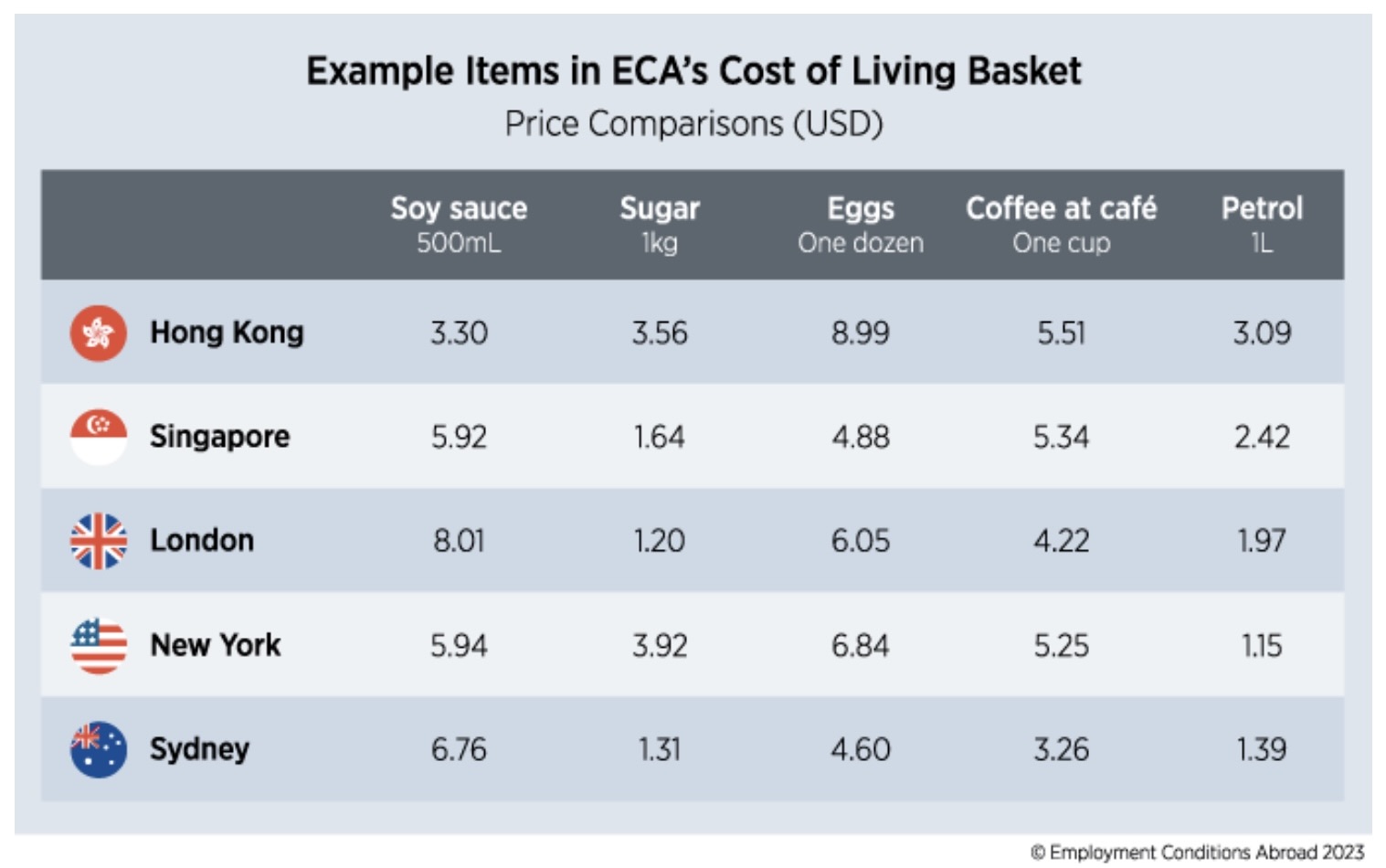Hong Kong is now the second-most expensive location in the world for expats, having been surpassed by New York. This shift marks the end of the SAR’s four-year reign at the top and was one of the findings of the latest cost of living research published by ECA International.
Despite historically high rates of inflation – in which the consumer price inflation rose to 1.8% in May 2023 and is expected to increase – Hong Kong still fell in the rankings as prices rose at a faster rate in New York. Accommodation costs continued to fall in the city in 2022, as evidenced by the city now being the second-most expensive city in the Asia-Pacific region to buy private homes.

“Costs for goods and services in Hong Kong rose at multi-year highs, showing that the city was not spared from the wave of inflation we have seen throughout the world in the past year,” said Lee Quane, Regional Director – Asia at ECA International. “In spite of this, Hong Kong fell in our rankings as the increase in prices of day-to-day goods and services was tempered by falls in accommodation costs in the city.”
Hong Kong’s fall in the rankings was matched by nearly all major locations in the region. Tokyo, which was consistently among the top five globally in the past five years, has dropped five places to 10th place. However, Singapore and Seoul were among the exceptions, with Singapore rising eight places to claim fifth spot and Seoul climbing one place to secure ninth position.

Chinese cities fell in the rankings due to the impact of a weaker Chinese yuan and lower rates of inflation compared to other countries. Shanghai and Guangzhou, while retaining their status as the most expensive cities in China, have fallen out of the global top 10 and now rank as the 13th and 14th most expensive cities in the world.
ECA International’s cost of living research is carried out in March and September using a basket of day-to-day goods and services. The data used refers to the March 2023 data collection period with changes compared to the March 2022 period, and covers food, necessities such as household goods and general services, general requirements such as clothing and meals out, utilities costs, and public transportation expenses.
Header image credits: Leung Cho Pan via Canva




Add comment